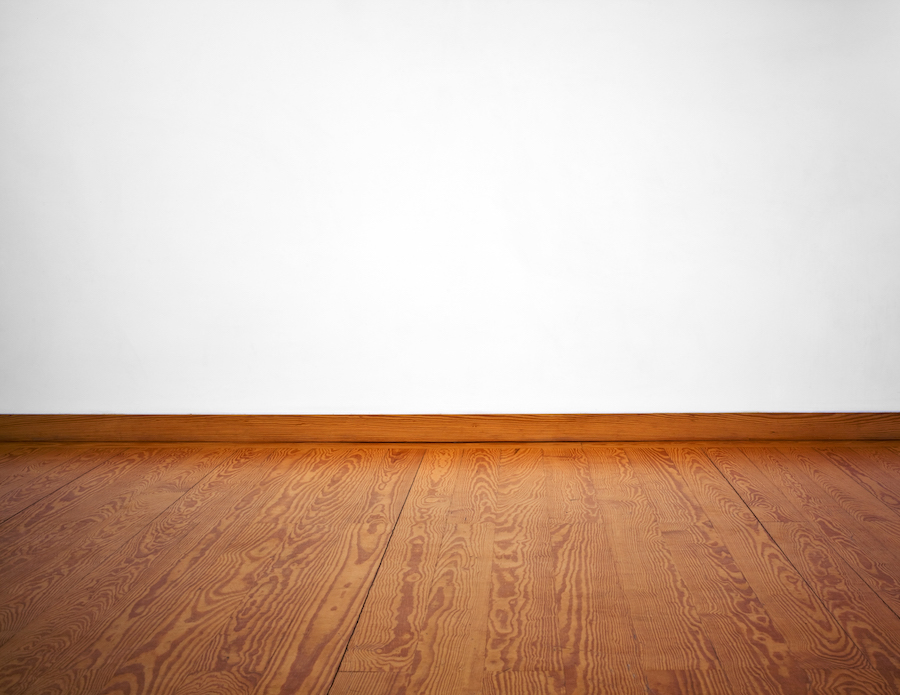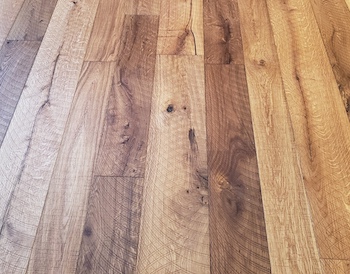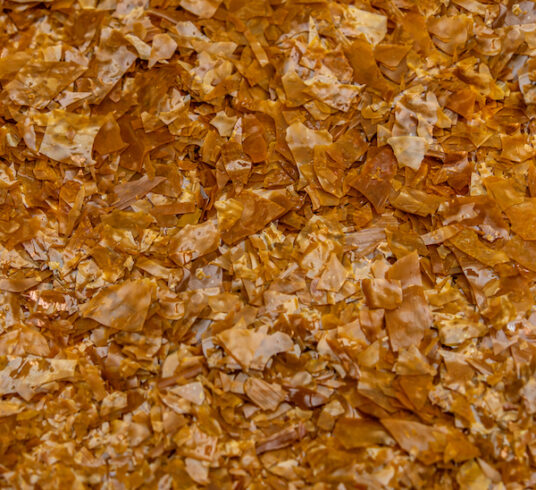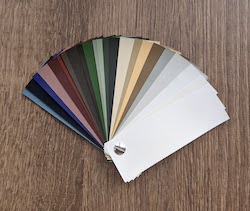If you want an all-natural non-toxic floor finish there are a few options:
- Natural drying oils include durable tung oil and linseed oil.
- Hemp oil and walnut oil can also be used but are not very durable.
- Shellac is a natural wax mixed with alcohol.
- Other natural waxes can be used over the oils or shellac.
- An unusual pure and natural finish is a Danish Soap finish for an invisible look.
- If you want a painted look, it is possible to use a 100% natural paint.
Natural finishes don’t look like your typical polyurethane coating. Oils darken wood but produce a matte look. The waxes add some more sheen. Shellac is naturally quite shiny. The soap finish will give you the most invisible look.
Milk Paint can look like a regular matte paint but since you need a topcoat over it you are not going to be able to get white floors with all-natural products.
This article contains affiliate links, upon purchase I make a small commission at no extra cost to you.

1. Tung and Linseed Oil

Tung and Linseed oil are the best natural penetrating oils for hardwood floors.
The technical term for these oils is drying oils because they polymerize, forming a long-lasting protective layer on wood and stone.
Tung provides the most durable finish of the oils and linseed is not far behind. Both of these oils perform well and can be considered in all homes without any major sacrifice.
Tung oil however is very thick so it is usually cut down with a solvent when used on wood. That can be harsh, even if natural. I prefer to use 100% natural tung oil without a solvent whenever possible.
Linseed also comes in different formulations. The natural and pure type is polymerized linseed oil from Tried and True. This does not contain driers, solvents, or any other additives.
It does come in variations that have added pigments if you want to get a darker hue.
Rubio Monocoat is linseed oil-based and comes in a much larger array of colors, however, we don’t know the full ingredient list.
2. Hemp and Walnut Oil

For some folks, tung and linseed oil have too strong of an odor. If you are chemically sensitive you will need to test the options yourself.
Hemp and walnut oil are milder in odor but they are also less durable. I did use hemp oil on my floors because I was so sensitive to chemicals and odors that the compromise was just fine by me. But normally you would not use hemp and walnut oil on floors, it just doesn’t hold up well enough
I love this walnut and beeswax finish and have used it on small projects like toys and decor items, but it’s the least durable of the natural oils for floors.
3. Shellac

Shellac is a natural resin that comes from a beetle mixed into alcohol. You can buy it premixed, but it’s not clear if 100% of the ingredients are disclosed.
I am fine with using the premixed version, but if you want something that you know is 100% natural and safe it’s not a big deal to buy the flakes and mix them with denatured alcohol or Everclear.
This is a shiny and at least slightly amber (depending on the resin color) traditional floor finish. It’s not used as much these days.
An oil and wax polish is often used over shellac like linseed and beeswax.
4. Natural Wax Finish

You can wax a floor that has already been treated with a natural penetrating oil or shellac. The wax can improve the protective properties of these finishes.
You can also wax unfinished floors.
Often a natural wax like beeswax or carnauba is mixed into the penetrating oil finish.
Tried and True has a linseed & beeswax finish, Fusion makes a hemp oil plus beeswax finish, and Real Milk Paint makes a walnut oil with carnauba wax (called Soapstone sealer or Wood Wax, pictured).
If the wax formulas are in a more solid form (not mixed with a penetrating oil) they are usually mixed with mineral oil. Mineral oil is technically natural. If it is deodorized it’s a fairly safe product (though not technically food safe).
5. Danish Soap Finish

Danish Soap finish is an unusual non-toxic way to finish floors. It is a process that uses pure soap as the finish.
You can either use just soap, or soap and lye.
Lye is quite toxic while it’s reacting, just make sure to let it dissipate fully.
When used in the making of soap the lye reacts with other components and in the end, you just have a safe soap product.
The look is similar to oil or wax, but without the sheen, darkening, or yellowing. Oils are always at least a little bit yellow/amber and darken the wood. Both oil and wax add various levels of sheen, depending on which product is used.
Danish Soap finish is flat and has an invisible look.
It is high-maintenance though, significantly more than anything else on this list. You have to reapply the finish quite often to high-use areas.
6. Milk Paint

Milk Paint in powder form is an all-natural product. You just mix it with water to form the paint.
It’s made of milk protein (casein), limestone, clay, chalk, and natural pigments.
It works beautifully on raw wood. If the wood already has a finish on it then it needs a synthetic primer – in that case, I would likely skip Milk Paint.
It requires a topcoat to be durable otherwise the finish is quickly ruined.
You can use the natural penetrating oils and/or shellac above. I have used two coats of Milk Paint, plus two coats of tung oil, then shellac on some items. Others will coat over this with a synthetic polyurethane floor finish for more durability.
It’s not the most ideal floor finish but with a durable top coat this can work.
7. Linseed Oil Paint

Much more durable than milk paint is linseed oil-based paint. This does not require a topcoat.
This is a natural oil-based paint. The binder is linseed oil, the other ingredients are all-natural as well. Brands that I have tested include Allback and Earth+Flax.
Naturally Bleaching Agents for Wood – Hydrogen peroxide or oxalic acid can both be used to create a bleached look. You could also mix white pigments into a finish if you are brave.
Natural Pigments for Staining Wood – Mineral pigments can be used to stain wood, but mixed in water this does not work all that well. They are best when already mixed into an oil base. Some pigments can be mixed into shellac.
Related Posts:
- Non-Toxic Water-Based Finishes for Wood Floors
- Zero-VOC Paints for Floors
Corinne Segura holds certificates in Building Biology, Healthier Materials and Sustainable Buildings, and more. She has 10 years of experience helping others create healthy homes.
If you would like to support the research behind this blog you can make a donation via Kofi!

Russ
Good point, a lot of vegan products can be very toxic.
Louisa
hello. we have engineered oak flooring which has become very slippery. which treatment would give the most grip ?
many thanks
Corinne
Talk to a flooring contractor about that. I haven’t reviewed those non slip sealants but you would want to look at the finish that is already on your floor first to see what your options are.
Ava
Hi – would greatly appreciate your opinion on maintenance for a floor finished with Allback linseed oil paint -OR- Allback linseed wax.
Have you lived with either types of finishes?
Thank you
Corinne
I have lived with hemp oil on floors. See the other comment on Tung Oil maintenance as maintenance will be very similar to linseed.
Darlene Marcum
Once I use the tongue and linseed oil on my hardwood floors, how often do I have to redo them and what do I use to wash them with?
Corinne
Anywhere from every year to every 5 years a maintenance coat can be added on top without sanding. Depends mostly on the wear but also check with each brand. Clean with regular gentle floor cleaners or eco friendly dishsoap or similar.
Bettina Rossi
Thank you for your reply. My search for a vegan floor wax continues.
Corinne
Carnauba wax is plant based
Bettina Rossi
Non toxic is great,but how about vegan products? I do not use any animal derived products or animal tested products. Thank you. Bettina
Corinne
Well these are all the all-natural options, some are animal based and others not. Beeswax, natural shellac (as opposed to synthetic shellac) and casein milk paint are not vegan.